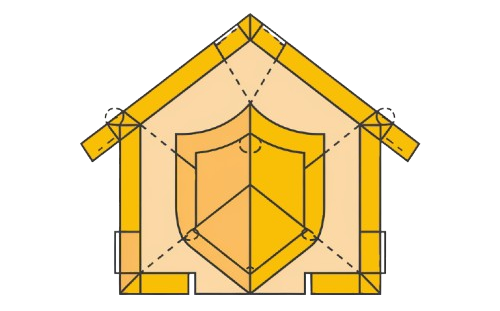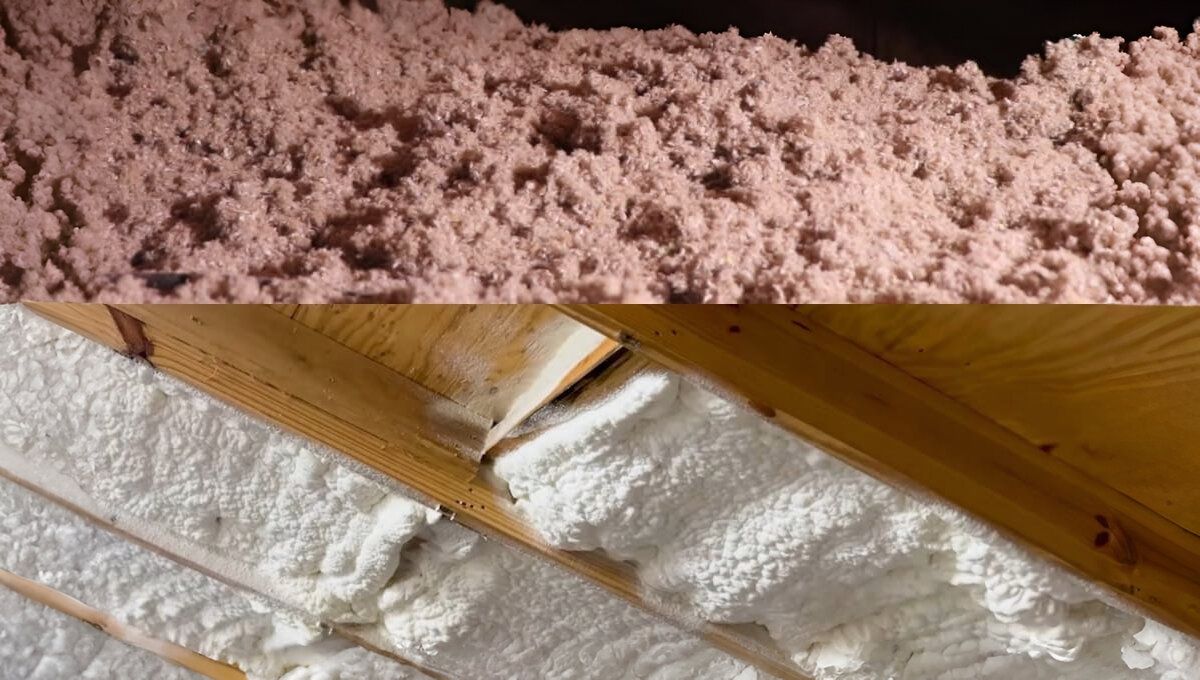Choosing the right insulation for your attic can be tricky. Between spray foam and blown-in insulation, each has its own pros and cons that can help you make the right choice for your home. When researching options, it’s important to understand the types available and their merits and drawbacks. Blown-in insulation is often praised for its ability to adapt to indoor spaces and fill gaps, maintaining consistent temperatures during hot or cold days. On the other hand, spray foam sets itself apart with its ability to stop air leaks and provide superior energy efficiency, making it a crucial player in reducing heated or cooled air loss.
The debate between these two types often breaks down into a discussion of advantages and disadvantages. Spray foam is made to create an airtight seal, making it highly effective for hot climates where cooling costs are high. Meanwhile, blown-in insulation—whether fiberglass or cellulose—offers a cost-effective option that can be installed quickly. If you’re planning an upcoming project, take time to explore each type, describe your needs, and examine your budget. A guide or specialist can help you choose the best option by breaking down everything you need to know and helping you weigh your choices. Whether it’s about controlling temperatures or managing energy costs, both options can serve your home well when matched to the right project.
Choosing the Best Insulation for Your Home: Spray Foam vs. Blown-In
Understanding Heat Transfer: Spray Foam vs. Blown-In Insulation
Choosing between blown-in insulation and spray foam requires understanding their ability to prevent heat transfer. Insulation plays a critical role in maintaining a comfortable home by addressing conduction, convection, and radiation—the three ways heat moves. Spray foam is designed to seal air-conditioned spaces and stop hot air from leaking, making it highly effective in reducing energy bills. With its higher R-value, this product offers superior resistance to heat transfer, keeping your attic cooler in the summer and warmer in the winter. On the other hand, blown-in insulation provides excellent coverage in irregular spaces, efficiently managing temperature while being easier to install.
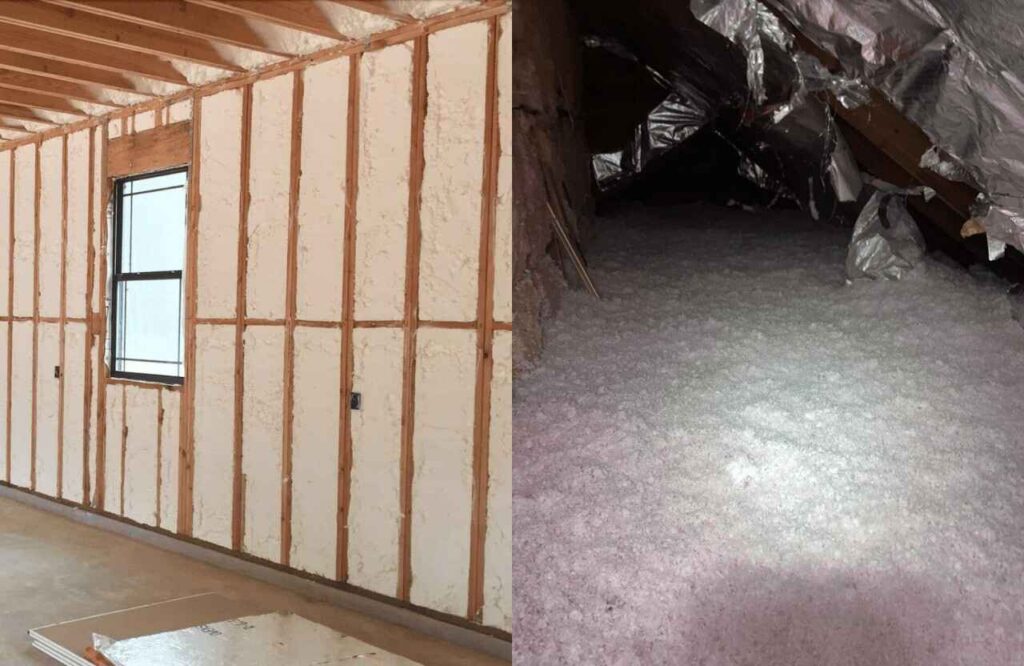
Both options contribute to mitigating heat transfer, but their benefits depend on your HVAC system and specific needs. For homes in warm weather, spray foam prevents heated air from escaping, while in colder climates, blown-in insulation helps retain warmth without overworking the system. Proper insulation ensures you can manage your climate efficiently, avoiding unnecessary energy usage. By choosing the right product and focusing on its ability to reduce energy costs, you can enjoy a more comfortable home without worrying about excessive heating or cooling expenses.
Cost Comparison: Spray Foam vs. Blown-In Insulation
When choosing proper insulation for your home, the upfront cost is often a significant factor. Spray foam insulation and blown-in cellulose are two popular options that vary in terms of cost. The cost of spray foam insulation is generally more expensive upfront, with prices typically ranging from $1.50 to $3.50 per square foot, depending on the thickness and type of foam used. In comparison, blown-in cellulose insulation is more affordable, costing around $0.75 to $1.50 per square foot.
While spray foam insulation offers better R-value and durability, blown-in cellulose provides a cost-effective solution, especially for large spaces. Your decision should consider both your budget and the long-term energy savings each option offers. Balancing initial expenses with the insulation’s overall performance will help you make the best choice.
Installation Process: Spray Foam and Blown-In Insulation
The installation process for spray foam insulation is highly specialized and involves a spray gun that combines two chemicals, which react and expand upon contact. The foam is sprayed directly onto the desired surface, creating an airtight seal that hardens and provides insulation for many years. However, this method can be time-consuming and may require additional safety precautions due to the chemicals involved. The smell from the chemicals may linger for several hours until the foam cures completely and fills any gaps effectively.
In contrast, blown-in insulation uses a machine to blow loose material, such as fiberglass or cellulose, into the desired space. The process often involves drilling small holes in walls or distributing the insulation across the attic, including cavities and top floorboards. This method is quick, efficient, and provides easy coverage, especially in hard-to-reach areas. Both approaches offer unique benefits, with spray foam delivering long-lasting performance and blown-in insulation ensuring cost-effective and versatile application.
Environmental Impact of Spray Foam and Blown-In Insulation
When considering spray foam insulation, it’s essential to understand its environmental impact. This insulation is made from a combination of chemicals, typically polyurethane foam, that is sprayed into place. While highly effective as an insulator, it comes with challenges. The chemicals used in its production and installation process can release volatile organic compounds (VOCs), which may contribute to air pollution and pose potential health risks. Moreover, the reliance on fossil fuels for production contributes to greenhouse gas emissions, making it a factor in climate change.
In contrast, blown-in insulation is often seen as a more sustainable option. It is made from recycled materials, such as cellulose from recycled paper products, which are sourced from post-consumer waste. This process helps in reducing demand for new materials and keeps waste out of landfills. Additionally, it requires less energy to produce, resulting in a lower carbon footprint and reduced greenhouse gas emissions. Blown-in insulation is also easily removed and recycled at the end of its lifespan, further minimizing waste and its environmental impact. Choosing between these options involves balancing effectiveness with long-term environmental considerations.
Understanding Spray Foam Insulation: How It Works and What It’s Made Of
Spray foam insulation is a modern solution for creating an airtight seal in homes, especially in attics and other hard-to-reach areas. Made from spray polyurethane foam (SPF), it starts as a liquid chemical that is applied using a spray gun or spray can by certified specialists. Once sprayed, the foam expands, forming a layer up to an inch thick that fills holes, cracks, gaps, and voids. This creates a continuous barrier that prevents air and moisture from passing through. Whether you need to insulate walls, ceilings, or floors, this spray-in insulation is designed to deliver superior protection.
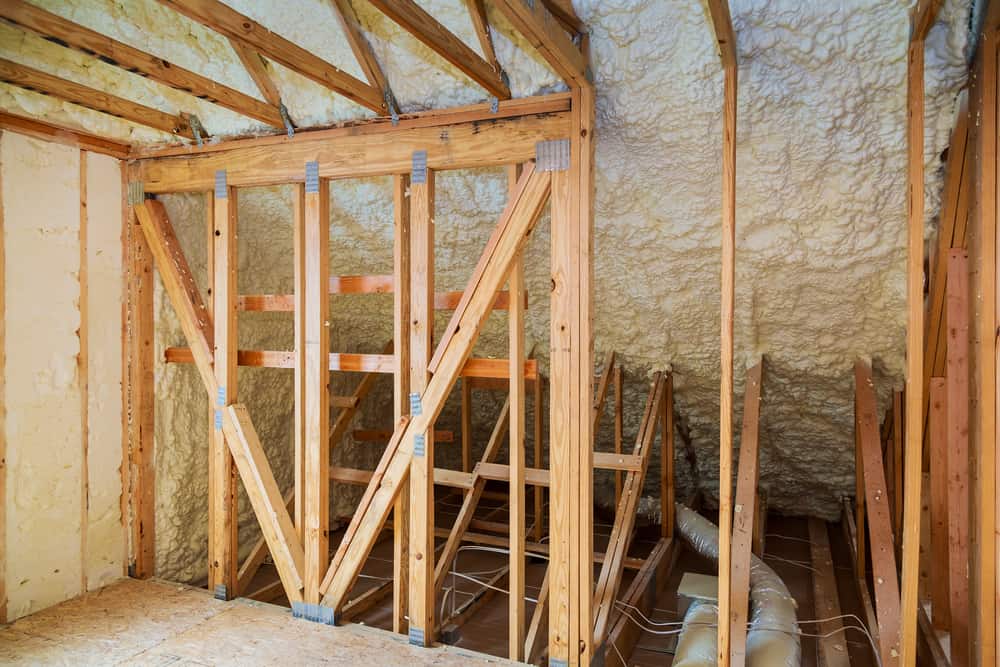
Spray Foam Materials and Application Methods
The versatility of spray foam insulation lies in the fact that it can be applied in several different ways, such as being sprayed, poured, or injected. It can also be foamed-in-place, depending on the area and requirements of the project. There are two main types of spray foam: closed-cell and open-cell. Closed-cell foam is dense, rigid, and provides a durable, high-strength coating, making it ideal for areas requiring maximum moisture resistance. On the other hand, open-cell foam is softer and flexible, designed for applications where some breathability is preferred. Both types expand to fill small spaces and harden to form a strong barrier.
Common Materials and Types of Spray Foam Insulation
The materials used in spray foam insulation include not just polyurethane, but also other components like Icynene and Tripolymer, which are less common but effective for specific needs. Closed-cell foam is packed with high-density cells that are fully enclosed, providing excellent resistance to moisture and airflow. In contrast, open-cell foam has partially compressed cells, offering a sponger texture for applications requiring soundproofing. This flexibility allows installers to work with a variety of materials, ensuring the insulation is tailored to your home’s needs.
Pros Of Spray Foam
- Spray foam insulation is a popular option due to its outstanding thermal performance and heightened R-values, often reaching up to 7.0.
- Certified attic specialists can install spray foam along the roofline, walls, and obstructed areas, freeing up floor space for walking or storing items.
- It works as an air barrier, expanding into small spaces and filling gaps around windows, doors, and frames.
- Its moisture-resistant properties help keep mold at bay and ensure long-term durability.
- Spray foam insulation provides additional benefits like soundproofing and fire-retardant properties, which reduce fire spread and prevent damage.
- It enhances energy efficiency by reducing energy costs and improving the overall comfort of your home.
- The material is highly durable, lasting for several decades without sagging or settling over time.
- It is ideal for tight spaces, such as around joists, HVAC equipment, and hard-to-reach areas, while also supporting home improvement applications.
Cons of Spray Foam Insulation
- Spray foam insulation contains dangerous chemicals, such as isocyanates, which must stay sealed inside the material. If improperly applied, these chemicals can cause health concerns, especially in DIY installations where harmful contaminants might settle on surfaces inside your home.
- Improper installation can lead to unpleasant smells and health risks, including exposure that can cause occupational asthma, difficulty breathing, chest tightness, and irritation of the skin and mucous membranes.
- This insulation is flammable, making it one of the more risky types in terms of fire safety. Additional fire retardant barriers may be required to meet building codes in certain US jurisdictions.
- Spray foam insulation is expensive compared to other options on the market and requires specialized equipment and a professional installer with proper certifications. This can increase costs, particularly in humid climates or various locations where air-filled cells might absorb water and degrade effectiveness.
- Builders and homeowners must budget for additional flame barriers and ensure vapor barriers are included to pass inspections for their next project.
Understanding Blown-In Insulation: A Versatile and Eco-Friendly Option
Blown-in insulation, also known as loose-fill insulation, consists of small pieces of materials such as cellulose, fiberglass, or mineral wool. It is commonly used in attics, walls, and floor spaces, filling gaps with a seamless layer that conforms to the shape of the area. This creates a thermal barrier, helping buildings stay warmer in winter and cooler in summer. Installed using specialized equipment, the material settles into hard-to-reach spaces and provides a consistent thickness for effective insulation. Its ability to adapt to irregular shapes makes it ideal for residential applications.
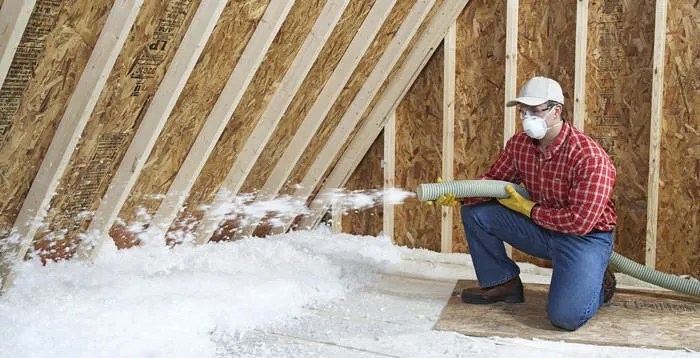
Blown-In Insulation Materials
The materials used in blown-in insulation are often eco-friendly and include 40-60% recycled glass, cellulose from newsprint, and tiny paper fibers. The industry has shifted away from materials like mineral wool, which is losing traction due to availability issues. Blown-in insulation offers excellent performance while being a dusty proposition to install. However, its full-coverage layer and insulating properties make it a common choice in today’s market. With the help of an advanced blower and specialized technology, installers can achieve a consistent application that ensures optimal thermal efficiency for any project.
Also Read: What Is Blown-In Insulation Made Of?
Pros of Blown-In Insulation
- Blown-in insulation is highly efficient and fills difficult-to-reach spaces easily.
- It provides comprehensive coverage and is made from non-combustible materials.
- It helps to slow the spread of flames, giving more time to evacuate safely in case of fire.
- Often made from recycled materials like Nu-Wool and cellulose, it’s an eco-friendly option.
- Reduces waste by keeping materials out of landfills and can be removed at the end of its life.
- Creates an airtight seal and is effective for filling gaps while reducing outside noise.
- Installation is generally uncomplicated, especially with certified attic specialists.
- Works well for irregularly-shaped attics, low ceilings, and areas with multiple obstructions.
- Saves money and time with its minimal invasiveness, ensuring drywall remains untouched.
- It’s a prime choice for tight gaps around wiring and pipes.
- Around eighty-five percent of Americans favor it for being inexpensive and effective.
- It significantly reduces energy bills and is ideal for already standing houses or new projects.
Cons of Blown-In Insulation
- Blown-in insulation made with fiberglass can irritate the skin and lungs if inhaled or touched, requiring PPE like dust masks and gloves for safe handling.
- Improper installation can lead to particles entering the home’s air supply, causing potential issues.
- The material tends to settle over time, reducing the R-value and overall effectiveness.
- Cellulose insulation is especially prone to settling and compression, which can lower its performance.
- Compression from stepping or storing boxes in the attic can tamp down the insulation, further reducing its efficiency.
Which Insulation Type is Right for Your Home?
Deciding which insulation type is right for your home can feel overwhelming, especially when comparing spray foam and blown-in insulation. Both are excellent products, but each has unique benefits. Blown-in insulation, made from materials like fiberglass or mineral wool, is often used in residential applications for its versatility and ability to fill tight spaces. On the other hand, spray foam offers superior R-values, making it ideal for homeowners looking to maximize energy use and efficiency. If you’re unsatisfied with these options, batts, also called blankets or rolls, may still be a viable choice.
When choosing insulation, you must consider your overall condition, including the state of your roof, windows, and HVAC system. If there are leaks or damages, these should be fixed before replacing insulation. Your budget is another critical factor—while spray foam is more expensive, it delivers long-term savings, while blown-in is more affordable upfront. Additionally, your local climate matters, as some types of insulation are better suited for wet or very cold environments. By focusing on your needs and conditions, you can select the best insulation that aligns with your price range and installation requirements.
Final Thoughts
When picking between spray foam and blown-in insulation, the match-up depends on your specific needs. While spray foam may initially look superior with its higher R-values and greater longevity, it’s essential to consider more than just performance. Choosing the best type for your home should be based on your overall budget, the climate of your location, and the specific area you’re insulating. Consulting a certified attic specialist to discuss potential health and safety hazards and other key factors can help you make the right choice for the long term.
FAQ
Why Can’t You Sell a House With Spray Foam Insulation?
Prospective buyers often worry about potential mold growth or moisture issues caused by improperly applied spray foam insulation. These concerns can lead to health risks, making traditional insulation methods seem less risky.
What Are the Disadvantages of Blown Insulation?
Blown insulation can have disadvantages, such as poor installation leading to uneven coverage, material waste, and structural issues like sagging ceilings. Hiring a skilled installer is crucial to ensure you get the most out of this insulation type.
Is There a Downside to Spray Foam Insulation?
Spray foam insulation is a good insulator for keeping rooms warm or cool, but its downsides may outweigh the benefits. It can cause potential health issues, environmental damage, and ventilation problems, and may even make it difficult to get a mortgage, leading to a lower home valuation.
Is Spray Foam Worth It in the Attic?
Spray foam is an ideal choice for insulating the floor of the attic as it is air impermeable and a powerful insulator. It keeps conditioned air in the living area of the home and prevents warm or cool air from the attic from entering, which could cause condensation, mold, and other problems.
